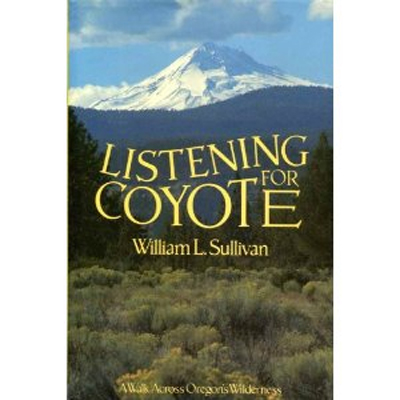|
The best of ‘Armchair travel’ books
 |
Zach Urness/Daily Courier
|
Here’s a a few of the best outdoor books from Jon Krakauer to Mark Twain. It’s a collection sure to keep your mind outside, even if the weather is keeping you indoors. o o o oBy Zach Urness of the Daily CourierThe beginning of March can be a frustrating time for those of us who love hiking and camping in Oregon's backcountry.We’ve survived January and February, sure, but the sun still hasn’t made its comeback and the really good mountain spots won't be open for a few months. But there’s one brand of travel always available to those craving an outdoor fix. This style of adventure is known simply as “armchair travel” and all you need is a well-written story to visit anywhere from Mount Everest to Appalachia to Antarctica. The best travel/outdoor writing makes you feel as though you're alongside the author. The topics described can be funny, life-threatening, profound, irreverent or all of the above. And if you're lucky, you'll learn some interesting facts along the way —but not too many. So here, without further ado, are a few of my favorite outdoor/travel books to help pass the time until you can make a trip of your own. "Listening For Coyote, A Walk Across Oregon’s Wilderness," by William L. Sullivan This Oregon classic follows the journey of Sullivan on a 65-day, 1,361 mile hike from the state’s western shore of Cape Blanco to the eastern point of Hells Canyon. There are numerous things to enjoy about this nonfiction story, not the least of which is that Sullivan describes many local trails as he travels through the Southern Oregon section of his trip. Sullivan’s talent lies in mixing personal observation, natural history and biological fact into a soft-spoken but powerful narrative that is by turns humorous, philosophical and descriptive. There’s an environmental message present throughout, but Sullivan never beats you over the head with it, and the most memorable aspects are the characters he meets along the way (one of which is Grants Pass legend Len Ramp). All in all, it’s a must-read for anyone who loves hiking in Oregon. “Lost In The Wild, Danger and Survival in the North Woods,” by Cary J. Griffith This intricately crafted nonfiction story follows two separate hikers who become lost in the famous Boundary Waters Canoe Area Wilderness in Minnesota’s North Woods. The brilliance of these gripping stories is the step-by-step detail. Griffith’s short, descriptive sentences illustrate in horrifying detail how easy it is for even accomplished, well-prepared hikers to find themselves lost and in serious trouble. This book does a masterful job of allowing the reader to see through the eyes of the ill-fated hikers, taking one through the thought process of becoming lost and the method by which they’re rescued. It’s a truly scary read and a cautionary tale for all hikers, but it’s also packed with useful information. “Into the Wild,” by Jon Krakauer It would be impossible to write a column on outdoor stories and leave this nonfiction bestseller — which recently was made into a movie directed by Sean Penn — off the list. The story centers primarily on Christopher McCandless, a young man who rejects his upper-class suburban lifestyle for a vagabond existence that ultimately ends with his death in the Alaskan wilderness. The story is familiar enough — a disenfranchised youth seeks relief by escaping to the wilderness, but there’s an undeniable power in McCandless’ philosophy and journey. Some people see McCandless, who died trying to live off the land in Alaska, as a starry-eyed fool who didn’t respect the dangers of nature. Others view him as a sort of folk hero, an idealist of the highest regard who demonstrated through his life the way to escape the materialistic ills of postmodern America. Krakauer, who’s probably the best-known outdoor author in America, renders this fascinating story in lighting-fast prose that most people finish in a few days. “Roughing It,” by Mark Twain Twain was the ultimate rambling man in the newly forming American West during the 1860s, and this book is a fictionalized account of those years. This narrative follows Twain (whose real name was Samuel Clemens) through a series of adventures, mishaps and money-making failures. Along the way he meets an oddball cast of desperados, vigilantes, newspapermen and prospectors that populated the American West in the 19th century. The appeal of this story is Twain’s unique prospective and legendary wit that can make even his darkest failures hilarious. There are a few chapters that can get long-winded (his endless descriptions of failures in mining and prospecting) but overall the story is so vivid and funny that it’s hard to put down. A few more: Here are a few more excellent choices: “A Walk in the Woods,” by Bill Bryson; “A Walk Across America,” by Peter Jenkins; “Alive: The Story of the Andes Survivors,” by Piers Paul Read; “Endurance, Shackleton’s Incredible Voyage,” by Alfred Lansing; and “Into Thin Air,” by Jon Krakauer.
| 




